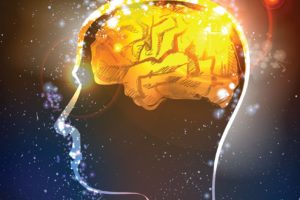Here in Arizona, March is time for spring training. Baseball fans from all over the country come to catch some sun and watch their favorite Cactus League team prepare for a new season.
March is also a time to think about spring brain exercise! Since 1995, Brain Awareness Week has been celebrated in mid-March all over the world to increase public awareness of progress and benefits of brain research.
Here’s some good news you can use from brain researchers: Alzheimer’s rates are dropping among some groups!
Decline in Alzheimer’s rates
According to gerontologist Linda P. Fried, dean of Columbia’s Mailman School of Public Health, “The Health and Retirement Study http://hrsonline.isr.umich.edu/, a longitudinal survey funded by the National Institute on Aging, has recently shown that among Americans with high levels of education, rates of Alzheimer’s disease have actually plummeted since 2000…it should motivate us to figure out exactly what resources, activities, and environments protect against dementia.”
There is still room for improvement. The age-adjusted Alzheimer’s death rate in the United States is one of the highest rates in the world. Yet some countries such as Germany have achieved a drop over the past few years (World Health Organization).
However, some American states are doing better than others. New York has the lowest rate of Alzheimer’s in the U.S. If all states matched New York’s Alzheimer’s rate, America would have one of the lowest rates in the world. Check your state with the CDC here.
7 brain exercise tips
No one knows what causes Alzheimer’s or how to prevent it. Supplements don’t work, and there is no vaccine. There is no magic bullet.
The best advice continues to be “use it or lose it.” Make your brain work hard to build new connections, which is what brain training is all about.
As part of your spring brain training, make sure your lifestyle includes these seven brain-building habits as a matter of routine.
-
Friendships
The best way to fight stress is to have caring friends with whom you celebrate triumphs and recover from setbacks. Be a friend to have a friend.
-
Learning
Lifelong learning is the best way to follow the advice to “use it or lose it.” Besides, it keeps you from being boring to your friends. Make sure you have a learning regimen to work all five of your brain assets.
-
Movement (ABS)
Moving the body is the best way to follow the advice “move it or lose it.” Movement is not the same as exercise, but rather it is anything but sitting (ABS) and includes writing, the arts, and speech.
-
Relaxation
When the mind is calm, the brain’s vagus nerve sends the message throughout the body that it’s time to relax. Deep breathing is the best way to engage this relaxation response and fight stress-induced inflammation.
-
Self-expression
Sharing your thoughts and feelings through conversation and creative activities such as acting, art, dancing, playing a musical instrument, singing, or writing help the brain process toxic emotions as the mind gains new perspectives on troubling experiences. This reduces inflammation!
-
Service
Responding to the needs expressed by other people promotes the healthy integration of brain activity related to your inner and outer worlds.
-
Story
Our brains are built to find meaning in life through stories, so that we can harvest wisdom from our life experiences to share with others. Expose your mind to story-telling cultural activities, including movies, music, novels, plays, and writing classes.
To learn more about neuroplasticity and brain exercise, see Better with Age: The Ultimate Guide to Brain Training by Phyllis Strupp.



